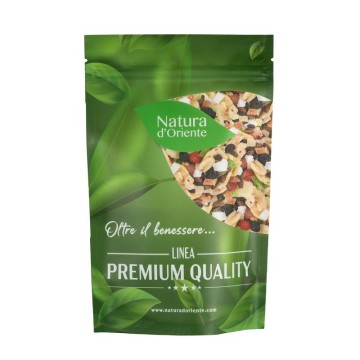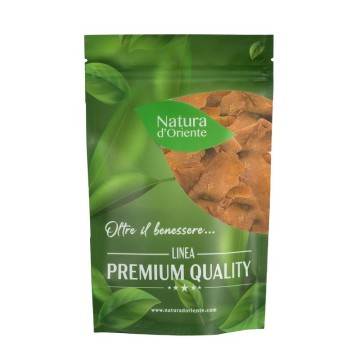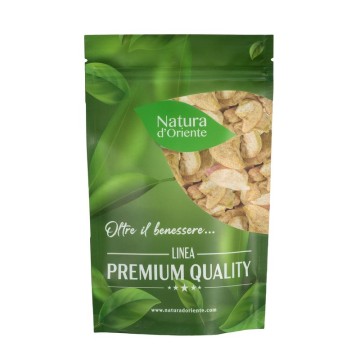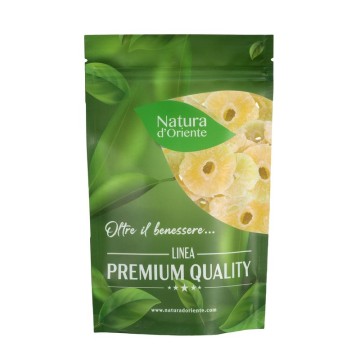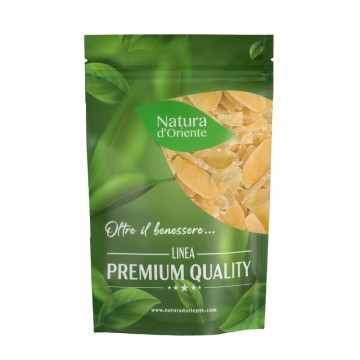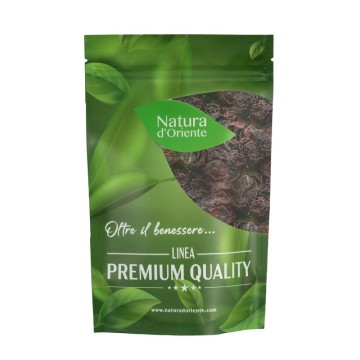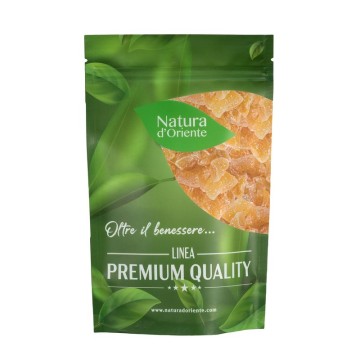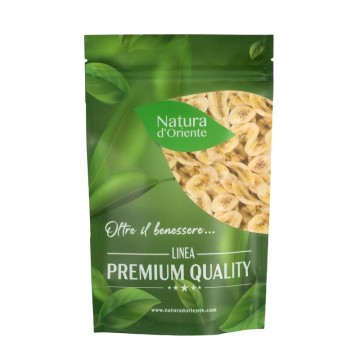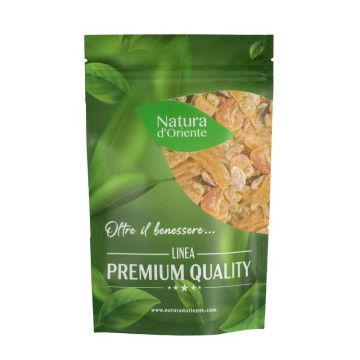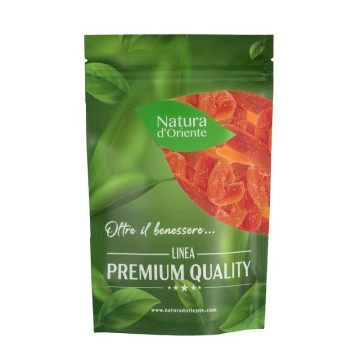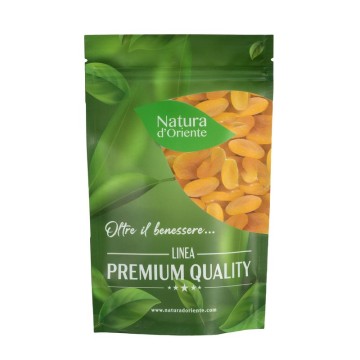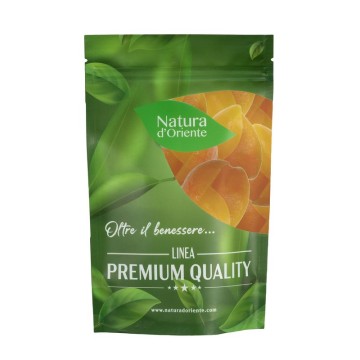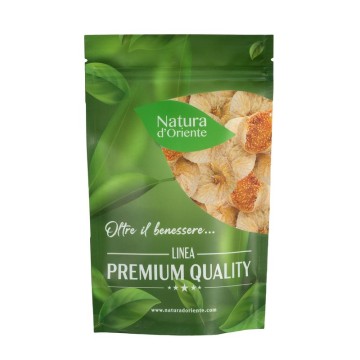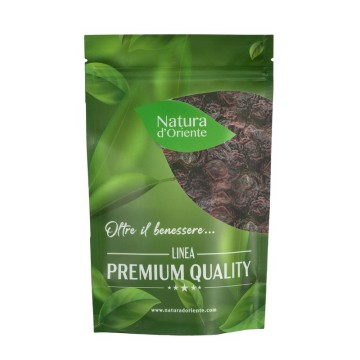Dehydrated Agen plums with stone
The plums of this particular variety, once dried, become a concentrate of nutrients and sugars that are easily assimilated by our body.
An excellent source of well-being for the intestine and as a food rich in antioxidants, substances that help us fight aging - they trap free radicals, at the origin of cellular degeneration.
Dehydrated d'Agen plums with stone: properties and benefits
It is a particularly energetic plum, rich in minerals and vitamins, and soluble fibers that develop a particular element, propionic acid. This plays a role in the inhibition of enzymes involved in the synthesis of cholesterol by the liver.
Plums, therefore, are an excellent source of fiber, providing about 7% of them.
An element that makes this type of dried fruit interesting is the presence of vitamin A (beta-carotene) and other antioxidant elements , it represents a protective factor for the skin and sight.
The prunes of Agen consumed regularly, can help the body also thanks to the presence of potassium , which promotes the well-being of the heart muscles, and of the impulses nervous.
In addition to A, the vitamins present in prunes are those of group B, vitamin C and vitamin K. Dried prunes can bring benefits to the well-being of the bones thanks to the vitamin K, abundant in the dried fruit, which favors mineralization bone, and thanks to boron, an element that helps retain calcium and magnesium in the body.
When the Agen plums with their properties are dehydrated, they are also enriched with iron and can help prevent and treat its deficiency.
Like dehydrated fruit, plums are almost free of fat and salt and the main sugar, sorbitol, is not digested , ending up in the intestine to facilitate its work and combat the phenomena of constipation.
The fact that sorbitol is degraded without the intervention of insulin (in fact it is often used in diabetic products as a sweetener), plums have a controlled glycemic index.
They don't deny themselves in energy though, as they provide readily available and gradually assimilated sugars.
Regarding sorbitol, rare in the plant world, the dried plum of Agen has a fairly high content, on average 10 grams; this sugar is also known for its stimulating properties for the proper functioning of the gallbladder and intestines.
Origins and History of cultivation
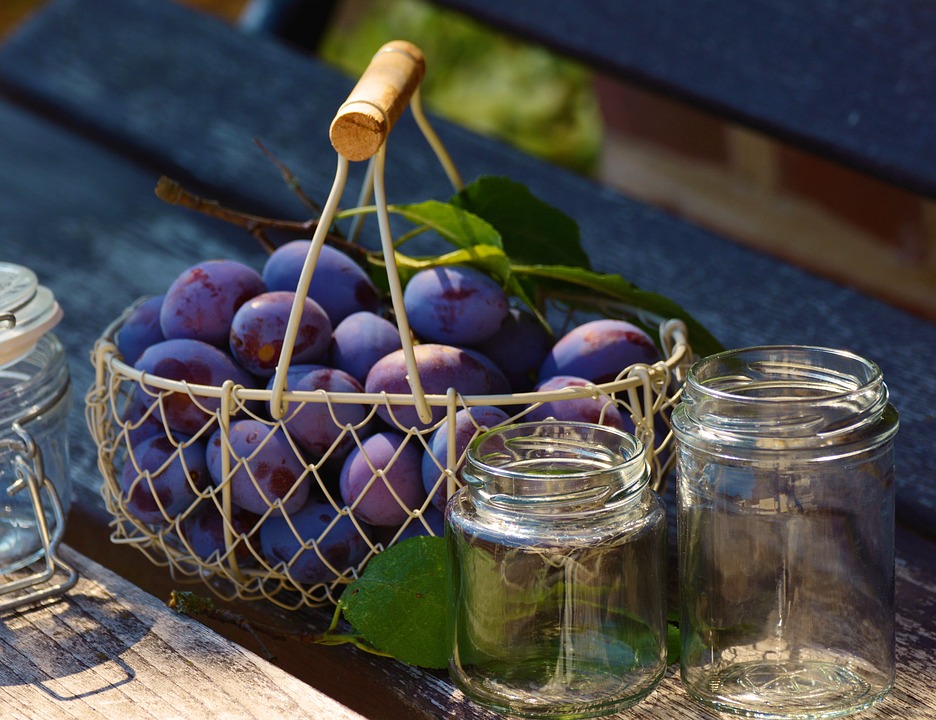
From the first plum crops in Gaul, in the then Roman province of Narbonne, the Prunus domestica plant was transformed in the 12th century into what we know today as the Agen version.
The Benedictine monks of the Abbey of Clairac between Agen and Villeneuve, returning from the third crusade, decided to create grafts between local plum plants and new plum plants brought from Syria.
In this way, a variety called Prugna d'Ente was created, which had a mauve blue color, delicate flavors, which over time has become the Agen plum. Since then, for centuries it has been known above all as dried plum, a type of dehydrated fruit appreciated for its ease of being exported!
Even as an escort for the voyages of the French merchant navy, this type of prunes was shipped as a supply and carried around the world - even if its cultivation remains on French soil. It is from this maritime tradition that the recipe with plums combined with a mixture of eggs, flour and sugar was born, for the famous Plum Flan (Far breton).
Plant and Fruit
The Prunus Domestica plant probably originates in Asia, in the Caucasus area, and spreads throughout Europe, passing through Syria. From the ancient species cultivated by the ancient Romans, as we have seen, especially in the Middle Ages it spread following the Crusades, throughout the European territory also with other varieties.
The plum plant is usually a small tree, its height usually does not exceed three meters, and deciduous leaves.
The white, star-shaped plum blossoms bloom in spring, and in some varieties they develop even before the foliage.
The fruits have different colors, from green to purple, and different shades of pink and red. This multiplicity of tones is due to the many hybridizations that have occurred over the centuries, as the Prunus plant is very ancient, but due to the plumsne d'Agen typical properties are dark color and delicate flavor.
Nutritional values of dehydrated Agen plums with stone
Among the dehydrated fruit, the prunes of Agen have benign nutritional characteristics, thanks to the presence of not excessive sugars (37%), proteins (1.4%), mineral salts and vitamins, low fat (0.4 %) fibers (around 8%) of which about 3.5% soluble and an excellent caloric intake for dried fruit, of 250 Kcal.
As we have said, the values of beta-carotene or retinol, precursor of vitamin A, and also vitamins B, C, E and K with restorative and mineralizing properties are good in prunes.
In terms of mineral salts , dried d'Agen plums contain other essential micro-nutrients such as calcium, potassium (about 800 mg), sodium, magnesium, phosphorus, boron, iron (about 4 mg ).
How to consume dehydrated Agen plums with stone
The dry version of prunes is often used as a dietary snack that breaks hunger or as an energy meal, due to its sugars and mineral salts.
Agen prunes are soft and juicy, and the fact that they keep the stone makes them suitable for "snack" consumption, as if they were candy.
These dehydrated plums with stones must be stripped of the stone if they are to be used in the kitchen, or in the creation of energy bars for athletes.
If pitted, Agen plums can be added to sweet preparations, but also to flavor dried fruit mixes, smoothies, yoghurts, fruit salads or ice cream.
Dehydrated d'Agen plums: side effects and contraindications
There are no particular contraindications to the intake of dried fruit such as prunes, but certainly we must keep in mind a possible intolerance to the food.
Furthermore, the correct quantities should not be exceeded, otherwise you risk the laxative effect and bloating.
Another data to be evaluated for the dried plums of Agen concerns people who suffer from diabetes, since these fruits are rich in sugars; in addition, they can increase blood glucose levels even in the case of diabetes from pregnancy or breastfeeding.

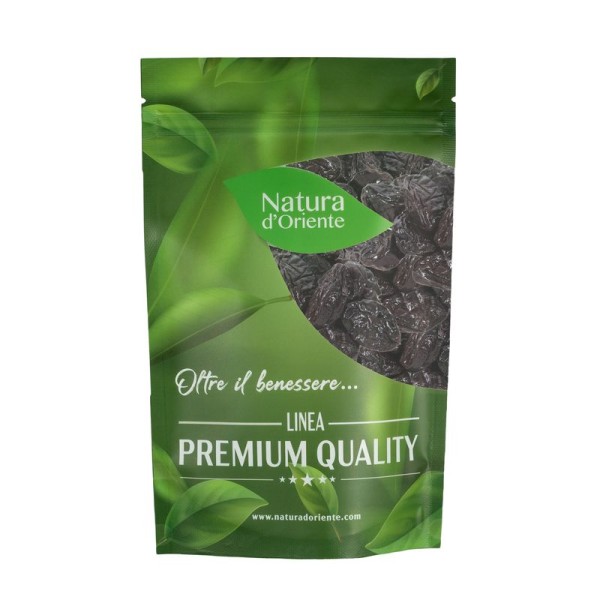









 No reward points for this product.
No reward points for this product.


